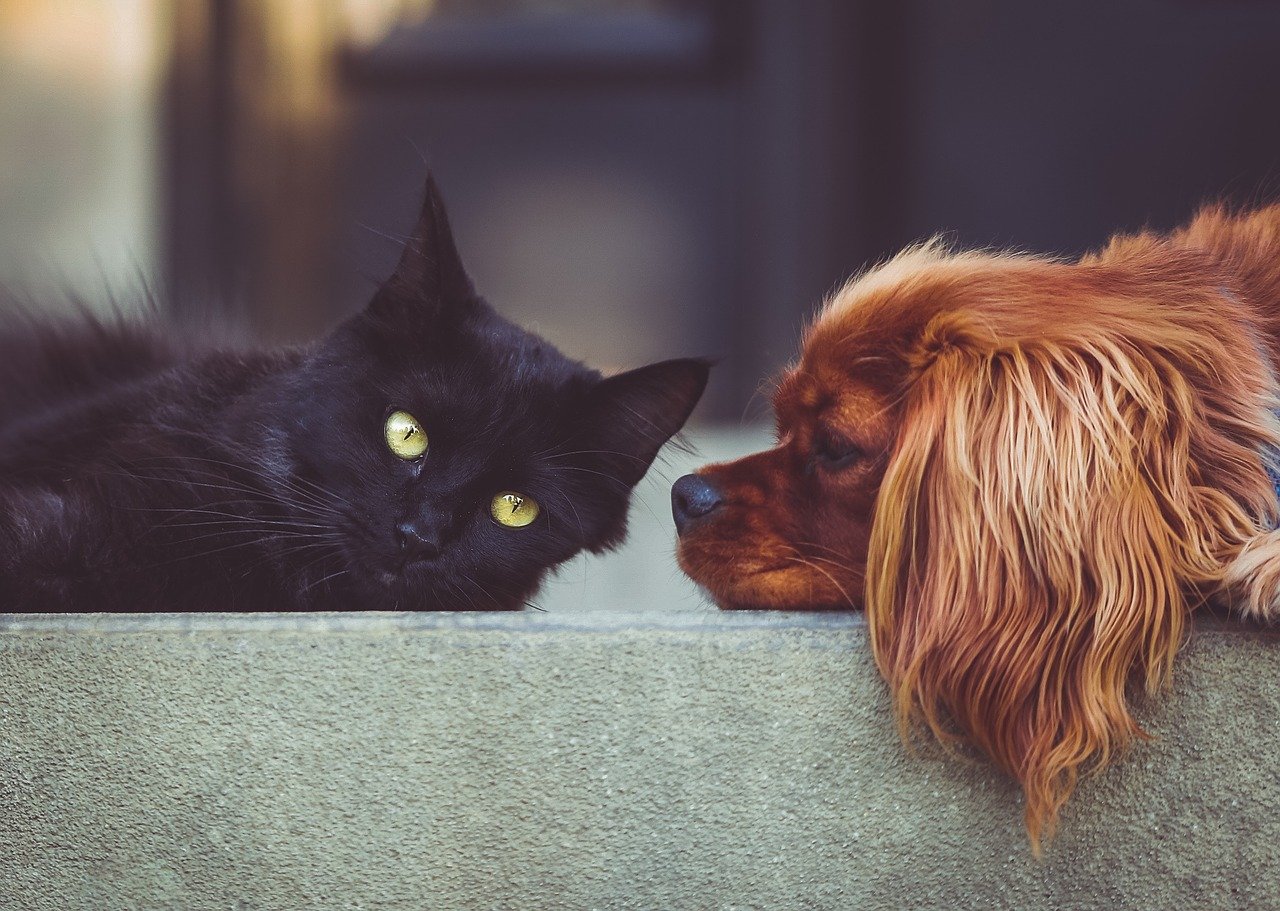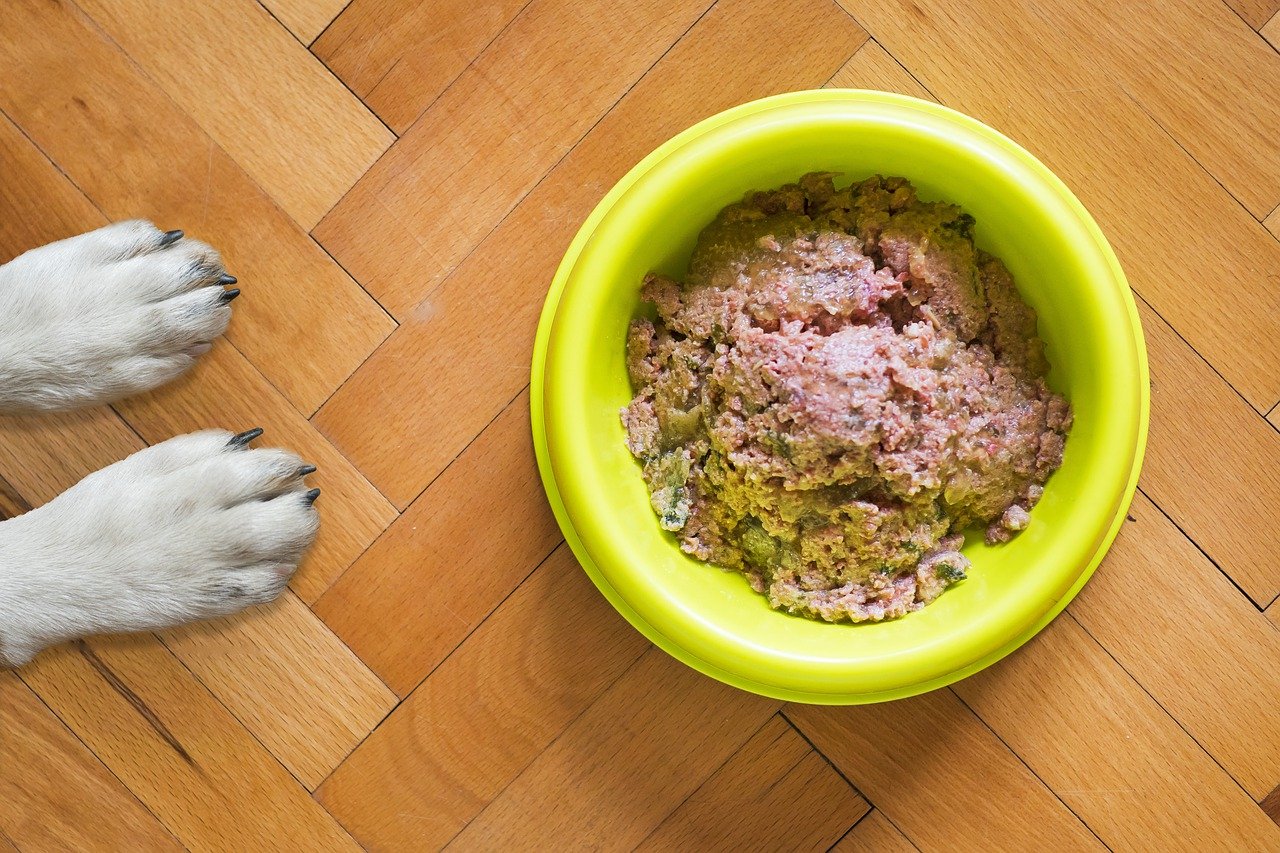Should my Dog go Vegan?
- Cats and dogs are big meat-eaters, accounting for about 25% to 30% of total meat consumption in the U.S.
- Their meat-heavy diets are a big reason for their substantial carbon footprints—sometimes exceeding that of a gas-powered car.
- Vegan dog food is on the rise, as is pet food made with lab-grown meat and insect protein, to offset the carbon footprints of our beloved companions.
- Learn more about the environmental impact of pets and how you can help.
Dogs can do no wrong, right? Except purportedly emit more than a car’s worth of carbon dioxide—but that’s true for all of us.1
Much like having a child, having a pet can be hard on the environment. Especially because most eat meat-heavy diets, which result in staggering amounts of methane, carbon dioxide, and nitrous oxide emissions. Studies show that dogs and cats alone account for 25% to 30% of total meat consumption in the U.S. and are therefore responsible for about 1% of the country’s greenhouse gas emissions.2, 3
Of course, pets are such a delight that we simply can’t not continue sharing our lives with them. So, we’ll have to learn how to reduce their carbon footprints—pawprints, rather—in the same way we strive to reduce our own. More about the environmental impact of pets and what you can do to minimize it, ahead.
What’s the Carbon ‘Pawprint’ of Cats vs. Dogs?

According to the original 2010 printing of Mike Berners-Lee’s “How Bad Are Bananas?,” the average-sized cat has a carbon footprint of 310 kilograms per year versus the average-sized dog’s 770 kilograms.
A large dog’s carbon footprint, according to the book, is more like 2,500 kilograms of CO2 per year, or more than three times the carbon footprint of an average-sized dog. Following Berners-Lee’s calculations, the larger the animal, the greater its footprint.4
Of course, these figures are largely based on the implication that said pets eat a traditional meat-based diet. Cats, being obligate carnivores, have no choice but to eat at least 70% meat. They rely on taurine, an amino acid found only in animal sources, so going plant-based would actually be dangerous to their health.
Dogs, on the other hand, are omnivores. They’re able to eat a more balanced diet, which could help drastically reduce their individual carbon footprints.
Besides diet, cats and dogs impact the environment in different ways. Cats, for example, are notorious for killing wildlife. In the U.S., they slay up to 4 billion birds and 22.3 billion small mammals per year.5 Indoor cats also go through an abundance of cat litter, which is traditionally made of clay that can take centuries to degrade.
Raising a Pet Vegan

Cats should never be fed a vegan diet, Chief Veterinary Officer of the American Kennel Club Dr. Jerry Klein told Shuki, but dogs can survive and sometimes even thrive without meat. Just look at Bramble, the British border collie that lived to 25 years old eating plant based.
Bramble died in 1978 and apparently remained the Guinness World Record holder for “world’s oldest bitch” for some time. She outlived the average border collie by more than a decade. Her keeper, vegan activist Anne Heritage, wrote a book about Bramble in which she detailed the dog’s diet of homegrown vegetables and herbs, brown rice, lentils, and textured soy protein.
Meat-free pet food companies like Wild Earth, V-dog, Petaluma, and Benevo presumably aim to replicate Bramble’s veg-only diet. There’s even one plant based company named Bramble, after the legendary border collie.
“Dogs’ digestive systems are capable of digesting and deriving nutrients from fruits and vegetables and metabolizing nearly 100% of the carbohydrates that they ingest,” Dr. Klein said. Despite this—and, apparently, Bramble’s iconic success story—he says he does not recommend a vegan diet for dogs under most circumstances, noting that it “could be significantly lacking in animal fats and proteins needed for most dogs to thrive.”
Cultured Meat: The Future of Pet Food?

As the perils of animal agriculture become more comprehensible, an increasing number of companies and consumers are turning to “cultured” or “lab-grown” meat—real meat made from the cell lines of animals (without hurting the animal!) in a laboratory setting.
Research confirms this slaughter-free meat alternative is much better for the planet: The carbon footprint of lab-grown beef is an astonishing 92% lower than the real thing. Lab-grown pork’s is 52% lower than its animal counterpart, and lab-grown chicken’s is 17% lower.6
Cultured meat is changing the future of pet food, one in vitro steak and chicken leg at a time. Founded in 2016, the microbiologist-founded pet food startup Because, Animals was one of the first on the lab-grown pet food scene. Its inaugural product, Harmless Hunt Mouse Cookies for cats, is available for preorder now.
Some companies—like Chews Happiness and Beco—are still using meat in their recipes but making a point to source organic, sustainable nutriment instead of supporting factory farming. Beco, for instance, uses wild-caught boar and tuna rather than the usual emissions-heavy beef and pork. Other companies, like Chippin, use crickets.
Insect protein is quickly gaining popularity as a low-impact protein source for both humans and animals. A 2017 study revealed that insect farms emitted 75% less carbon and used 50% less water than poultry farms.7
Tips for Raising a Pet Low-Impact
Here are some ways to reduce your pet’s environmental impact through food choices, plastic consumption, and more.
- Are you considering owning a pet? Try fostering first. When you’re feeling ready to commit, be sure to adopt your furry friend from a shelter or pound instead of going through a breeder or pet store.
- Help tackle pet overpopulation by getting your pet spayed or neutered.
- Shop around for quality pet food that uses only humanely and sustainably sourced meats, says Dr. Klein. “You can still improve the lives of farm animals and be mindful of animal welfare by seeking out animal food brands that have meaningful certification labels, which represent more humane and transparent farming practices.”
- If you have a dog, replace some of the meat it eats with fresh vegetables or switch to a pet food made with insect protein.
- Source pet food packaged in recyclable or compostable containers. (The same applies to toys and other pet supplies.)
- If you suspect that a vegan diet might be right for your dog, be sure to check with a licensed veterinary nutritionist first to ensure you’re giving your furry friend all the necessary nutrients.
- When purchasing toys, outfits, and accessories for your pets, look for products made out of non-toxic and biodegradable materials. We recommend organic cotton, hemp, or jute — like this adorable plush squirrel!
- Buy the green poop bags—the kind that biodegrades instead of sitting in landfills for decades.
- If you’re a cat parent, use biodegradable, plant-based cat litter instead of the standard clay stuff. And despite what the package says, never flush it down the toilet.
Featured Pet Brands:
- Wild Earth
- V-dog
- Benevo
- Petaluma
- Bramble
- Because, Animals
- Chews Happiness
- Beco
- Chippin
- Earth Rated Poop Bags
- Wagtopia
Sources:
- “Study says dogs have larger carbon footprint than SUV.” Phys.org. 2009.
- Orkin, Gregory S. “Environmental impacts of food consumption by dogs and cats.” PLOS One. 2017.
- “What if the United States stopped eating meat?” Clarity and Leadership for Environmental Awareness and Research (CLEAR Center) at UC Davis. 2020.
- Berners-Lee, Mike. “How Bad Are Bananas?” 2010.
- Loss, Scott R., Tom Will, and Peter P Marra. “The impact of free-ranging domestic cats on wildlife of the United States.” Nature Communications. 2013.
- “New studies show cultivated meat can have massive environmental benefits and be cost-competitive by 2030.” Good Food Institute. 2021.
- Halloran, A., Y. Hanboonsong, N. Roos, and S. Bruun. “Life cycle assessment of cricket farming in north-eastern Thailand.” Journal of Cleaner Production. 2017.


